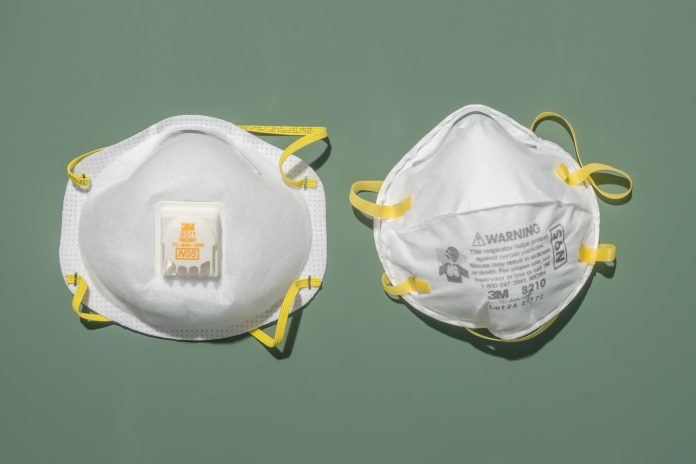High-filtration masks have become a popular topic of conversation during the COVID-19 pandemic. These masks are designed to filter out a high percentage of airborne particles, including tiny droplets that may contain the coronavirus. In this article, we will examine the science behind high-filtration masks, how they work, and the benefits of using them.
How High-Filtration Masks Work
High-filtration masks work by using a combination of physical and electrostatic processes to capture airborne particles. These masks typically have multiple layers, each designed to filter out different types of particles. The outermost layer is often made of a hydrophobic material, which repels moisture and droplets, while the inner layers are made of electrostatically charged fibers that capture small particles as they pass through the mask.
High-filtration masks are designed to filter out particles that are 0.3 microns or larger, such as those from the novel coronavirus. These masks are made from multiple layers of non-woven fabric, which act as a barrier against particles. The first layer of the mask is usually made from spun-bond polypropylene, which is a type of plastic that is resistant to water and moisture. This layer is then followed by a layer of melt-blown polypropylene, which has ultra-fine fibers that act as a filter. The final layer is usually made from spun-bond polypropylene, which helps to add strength and structure to the mask.
The combination of these materials creates a mask that is able to filter out particles without sacrificing breathability. The layers of the mask also create a physical barrier that blocks particles from entering the airway. This barrier is further enhanced by the electrostatic charge of the melt-blown polypropylene, which helps to attract and capture particles as they pass through the filter.
High-filtration masks are an important tool in the fight against the coronavirus, as they offer a higher level of protection than standard masks. The combination of the different materials used in the masks helps to create an effective barrier that can filter out particles without sacrificing breathability. With proper use and care, these masks can help to protect you and those around you from the virus.
The effectiveness of a high-filtration mask depends on several factors, including the number of layers, the type of material used, and the fit of the mask. Masks that are well-fitted and have multiple layers of high-quality material are more effective at filtering out tiny particles than single-layer masks or masks made of low-quality materials.
Benefits of High-Filtration Masks
High-infiltration face masks are those that are designed to block out small particles, such as those found in the air we breathe. While traditional face masks may provide some level of protection from airborne particles, high-infiltration face masks offer significantly more protection.
The benefits of using high-infiltration face masks are numerous. Here are 10 of the most important.
- Maximum Protection: High-infiltration face masks are designed to filter out small particles, such as those found in the air we breathe. This makes them much more effective at preventing the spread of airborne diseases, such as Covid-19.
- Comfort: High-infiltration face masks are designed to be comfortable to wear, even for extended periods of time. They are typically lightweight and breathable, making them ideal for everyday use.
- Easy to Clean: High-infiltration face masks are easy to clean, which is especially important for preventing the spread of germs. They can simply be washed with soap and water and air-dried.
- Reusable: Unlike traditional face masks, high-infiltration face masks are designed to be reusable. This means you can use the same mask multiple times, making them more cost-effective.
- Durable: High-infiltration face masks are designed to be durable and long-lasting. This means you don’t have to worry about the mask tearing or becoming damaged easily.
- Stylish: High-infiltration face masks come in a variety of colors and styles, which makes them a great option for those who want to look stylish while still doing their part to prevent the spread of germs.
- Affordable: High-infiltration face masks are usually much more affordable than traditional face masks, making them a great option for those on a budget.
- Eco-Friendly: High-infiltration face masks are usually made from eco-friendly materials, such as organic cotton. This makes them a great choice for those who want to reduce their environmental impact.
- Variety: High-infiltration face masks come in a variety of sizes and shapes, making it easy to find one that fits you perfectly.
- Easy to Wear: High-infiltration face masks are designed to be easy to put on and take off. This makes them much more convenient to use, especially when compared to traditional face masks.
In conclusion, high-filtration masks are an effective way to reduce the spread of the coronavirus and other airborne illnesses. These masks work by using a combination of physical and electrostatic processes to capture airborne particles. When used properly, high-filtration masks can provide an additional layer of protection for individuals who are at higher risk of complications from COVID-19, help reduce the spread of the virus in the community, and are a more sustainable option than disposable masks. It is important to choose a high-quality mask that is well-fitted and comfortable to wear for extended periods to maximize effectiveness.
















